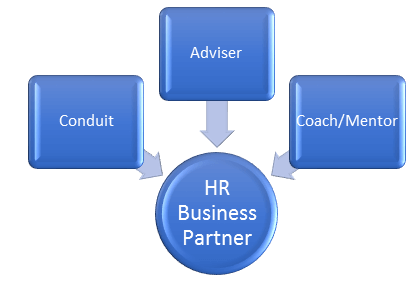Blog


What are the makings of a successful HR Business Partner model? The idea of the HR Business Partner has been around for over 20 years and was first described in Dave Ulrich’s book “Human Resource Champions” published in 1997. But what makes the HR Business Partner concept work for some businesses whilst others struggle? This article explores the foundations for successful HR Business Partnering in the modern workplace drawing on HBA’s practical experience in strategy through to execution.
1. Strategic Alignment - The first question to ask goes further back than the purpose of a HR Business Partner and goes to the core of your corporate HR strategy and its alignment to the broader business strategy. If the corporate HR strategy is not integrated and aligned with the business strategy, then the HR Business Partner model will struggle to make a difference. After all, without these clear linkages, it is difficult to establish purpose.
2. Service Delivery Mode - The next question goes to structure and how HR is being delivered in the business. Does your HR delivery operate:
We have seen many attempts at implementing a HR Business Partner model flounder simply because the business has sought to deliver a decentralised HR Business Partner function without sufficient engagement with corporate HR strategy.
Not only does this create confusion and lack of clarity for both business managers and the person performing the HR Business Partner role, but it also places the employer at risk of making decisions and delivering outcomes that are inconsistent with the business strategy and key governance requirements. The outcome for business can often be increased grievances, industrial disputation and even court action.
3. Role Clarity - As mentioned above, a HR Business Partner needs to operate consistent with corporate directives. As such, it is fair to say that the HR Business Partner can rarely act autonomously within a business unit. This message is often not adequately communicated or not understood by the managers within the business, creating unrealistic expectations regarding the deliverable of the HR Business Partner.
Therefore, it is important to clearly establish a shared understanding of the primary function and scope of authority of the HR Business Partner role with managers and employees in the business area and the HR Business Partner. This set of agreed roles and responsibilities can then be used to commence building the performance measures that are used to measure the impact of the HR Business Partner model.
We have found that the role of the HR Business Partner can generally be distilled into three areas of focus:

4. Getting the right person: Once the bones are in place, it is time to consider the best person for the job of HR Business Partner. There are many roles within HR and they should not be assumed to be homogenous. So, it goes without saying that not all HR practitioners will make great HR Business Partners.
When considering potential applicants, demonstrated experience across multiple HR practices is of course necessary. But of equal importance are the professional attributes of the individual. An effective HR Business Partner must be able to listen and understand, have strong analytical capability, be a strategic thinker with the capacity to translate strategy into practical tailored solutions, be a confident and resilient communicator and accept that they cannot and do not know everything - but they know how to find out - (remember, the HR Business Partner is not undertaking HR activity, they are focussing on strategy and tactics designed to deliver business outcomes, therefore, technical expertise, whilst valuable, is not essential, so long as the HR Business Partner has access to the technical expertise as and when required – the foundational matters of role clarity and linkage into corporate HR functions is critical at this point).
Importantly, do not forget that your HR Business Partner will form the front end ‘face of HR’. Think about the message you want to send to the business and ensure the HR Business Partner presents consistent with that message. Most importantly, avoid the HR ‘pleaser’ or ‘obstructionist/gate keeper’. Agreeing with everything the business wants sets expectations that will undermine trust and credibility and will rarely deliver what the business needs; whilst the rigid rules driven person will never build the trust and capabilities needed to ensure the business thrives in an ever-competitive market and will likely serve to create an even larger gap between the business and HR.
5. Marketing and Communications - Your next question relates to engagement with the business. The rich information you extract from the engagement with the business managers will often help shape the way in which you evolve the lines of HR accountability. Remember, marketing and communication is a living strategy which needs constant attention to maintain focus and relevance.
Your Business Partner communication strategy is also critical in reinvigorating HR’s contribution to the business providing an opportunity to;
To start, we recommend developing a HR Business Partner Client Service Charter which establishes not only a sound foundation for delivering effective HR solutions to the business, will also provide a clear escalation point for any business-related concerns to be resolved quickly and mitigation strategies implemented to prevent enable lessons learned to be used to proactively prevent any future similar issues arising.
The Client Service Charter needs to consider questions such as: How well have the managers within the business been introduced to the HR Business Partner model? Has their insight and feedback been sought in establishing the HR priorities and have you sufficiently dug around in matters that are apparent at a whole of organisational level and those that appear to be business group specific? Do you know what issues managers find important and do you understand what the business groups value from HR and where their gripes are?
Knowing the answer to these questions helps you establish where you need to focus and how you measure and communicate success. Not all complaints and gripes can (or sometimes, should) be resolved, but the act of acknowledging them and explaining the limitations whilst focussing on the deliverables of the business partnering approach can often relegate these matters to a more manageable level.
Implementation & Continuous Improvement
Once the model is built, the HR Business Partners engaged and the charter in place, it is time to implement. Strong, supportive management of the HR Business Partner is essential to maintaining quality outcomes and to ensure consistency across the business. Is the right person in place to manage this function?
Being the face of HR is rewarding, but it also means that they will often be the ones confronting challenging and emotive situations. Providing a supportive and constructive outlet for these challenges to be aired and validated will not only support the HR Business Partner but will also result in shared learnings and better business outcomes.
Regular reporting with measurable KPI’s will help keep things on track and will provide an early indication on the return on investment and where improvements could be made. Finally, at least once every 12 months, a formal review and evaluation should be conducted with the business groups to ensure the partnership is performing at its optimal level.
29 Somerville,
St SPENCE ACT 2615
PH : 02 6247 4490